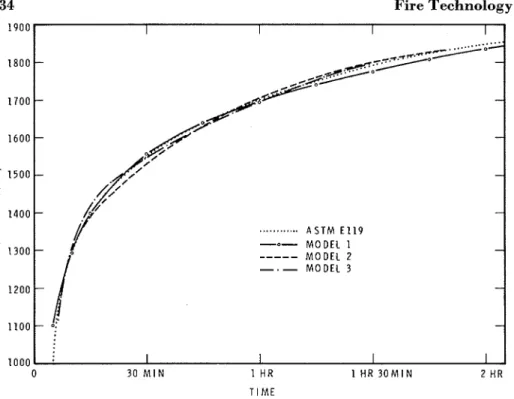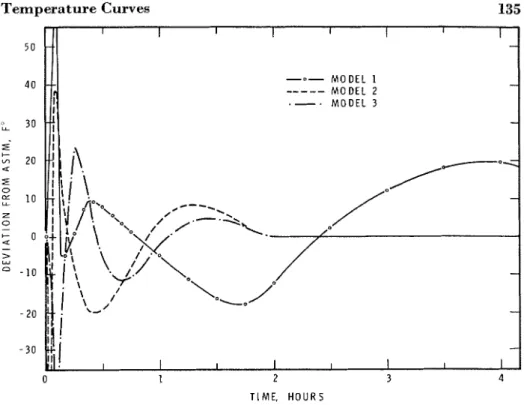Publisher’s version / Version de l'éditeur:
Vous avez des questions? Nous pouvons vous aider. Pour communiquer directement avec un auteur, consultez la première page de la revue dans laquelle son article a été publié afin de trouver ses coordonnées. Si vous n’arrivez pas à les repérer, communiquez avec nous à PublicationsArchive-ArchivesPublications@nrc-cnrc.gc.ca.
Questions? Contact the NRC Publications Archive team at
PublicationsArchive-ArchivesPublications@nrc-cnrc.gc.ca. If you wish to email the authors directly, please see the first page of the publication for their contact information.
https://publications-cnrc.canada.ca/fra/droits
L’accès à ce site Web et l’utilisation de son contenu sont assujettis aux conditions présentées dans le site LISEZ CES CONDITIONS ATTENTIVEMENT AVANT D’UTILISER CE SITE WEB.
Research Paper (National Research Council of Canada. Division of Building
Research); no. DBR-RP-573, 1973-05
READ THESE TERMS AND CONDITIONS CAREFULLY BEFORE USING THIS WEBSITE. https://nrc-publications.canada.ca/eng/copyright
NRC Publications Archive Record / Notice des Archives des publications du CNRC : https://nrc-publications.canada.ca/eng/view/object/?id=94001c7b-625e-4cf6-a208-5f6479158977 https://publications-cnrc.canada.ca/fra/voir/objet/?id=94001c7b-625e-4cf6-a208-5f6479158977
NRC Publications Archive
Archives des publications du CNRC
This publication could be one of several versions: author’s original, accepted manuscript or the publisher’s version. / La version de cette publication peut être l’une des suivantes : la version prépublication de l’auteur, la version acceptée du manuscrit ou la version de l’éditeur.
For the publisher’s version, please access the DOI link below./ Pour consulter la version de l’éditeur, utilisez le lien DOI ci-dessous.
https://doi.org/10.4224/40001752
Access and use of this website and the material on it are subject to the Terms and Conditions set forth at
Analytic equivalents of standard fire temperature curves
Ser
TH1
N21r2
no.
573
NATIONAL RESEARCH COUNCIL OF CANADAc
.
2 JONSEIL NATIONAL D E RECHERCHES D U CANADA BLDGAN
A i , - { ~ E D
Analytic Equivalerats
!of
Standard Fire
-Temperature Curves
by G. Williams-Leir Reprinted from F I R E TECHNOLOGY Vol. 9, No. 2, May 1973p. 132-136
Research Paper No. 573 of the
Division of Building Research
EQUIVALENTS ANALYTIQUES DES COURBES STANDARDS D E LA TEMPERATURE
DES INCENDIES
SOMMAIRE
Dans les ktudes analytiques, on doit remplacer par une ex- pression la courbe de tempkrature du brasier spkcifike dans la norme E-119 de I'ASTM pour les essais d'incendie de bstirnents en construction. Le prhsent article propose quelques expressions acceptables, dont on a calculk les constantes par des mkthodes de "moindres carrks".
REPRINTED FROM
F I R E TECHNOLOGY
I
Vol. 9 No. 2 M a y 19731
Analytic Equivalents
of
Standard Fire Temperature Curves
G. WILLIAMS-LEIRDivision of Building Research
National Research Council of Canada
A report of the development of analytical expressions that result i n a n improved fit t o t h e standard time-temperature curve.
I
N analytic studies of fire resistance, it is generally desirable or necessary , to represent the standard curves of the various national fire testing standards by analytic expressions. Several such expressions have been used in the literature; seven references are given by Lie.' This note at- tempts to improve the fit between these expressions and the NFPA curve. For this purpose, the task of devising such expressions is divided into two parts.The first is to find a model, an expression relating temperature to time, involving one or more constants, and preferably integrable. The second is to assign the best values-to the constants. The constants quoted in the literature appear to have been found empirically, and the purpose of this note is to supply best values calculated by "least squares" methods.
The generalized model may be taken as
T
- T o = F (t; a , b,.
.
.)where
T
= temperature predicted by the expression for time t hours, in degrees F: a, b,. . .
are constants to be determined, and T o = temperature a t time zero.The optimization process by which the constants have been deter- mined finds those values that minimize
m
C
(5!'
- TI2 (the "ordinate basis")K = 1
NOTE: The standard time-temperature curve is taken from Standard Methods of Fire Tests of Building Construction and Materials, NFPA No. 251. The curve has been adopted by the American Society for Testing and Materials as ASTM E-119 and by the Underwriters' Laboratories, Inc., as U.L. 263.
132
Copyright 1973 NATIONAL FIRE PROTECTION ASSOCIATION, 4 7 0 ATLANTIC AVE., BOSTON, MASS 0 2 2 1 0 Printed in U.S.A.
Temperature Curves 133
or
m
C
(f
- I)2 (the "integral basis") K - 1where T = temperature defined by a standard, I =
.I'
( T - To) dt, andThe result obtained will depend upon which fire test standard is used, which m points on the curve are chosen for the optimization, and whether the ordinate or integral basis was used.
I n all that follows, the standard curve is the NFPA Standard No. 2512. Details of which points were used are given in each case. T o = 68" F.
M O D E L 1
This CSTB model3 was fitted using the 8 points from 15 rnin to 2 hours a t 15-min intervals and the 12 points from there to 8 hours a t 30-min intervals on the ordinate basis.
The values a = 1341.8, b = 4.2243, and c = 304.98 define a curve that lies 17.8 F degrees below NFPA a t 1 hour 45 min, 19.5 F degrees above a t 4 hours, and 27.6 F degrees below a t 8 hours, these being the extremes of the deviation. Figure 1 shows this curve and the NFPA curve together, while Figure 2 presents the difference between them on a larger scale.
M O D E L 2
A version equivalent to the above was adopted by Lie4 because, when used as a boundary condition in heat flow calculations by the method of Duhamel. the form
is integrable. The values of the constants used by Lie are equivalent to the following values in the expression above:
a1 = 550 for degrees C; 990 for degrees F a 4 = - 0.6 a2 = - 200 for degrees C; - 360 for degrees F a s = - 3
a 3 = 850 for degrees C; 1530 for degrees F a s = - 12 With these values, the expression deviates from the NFPA curve by
134 Fire Technology I Y U U I I I I 1800 - 1700 - - 1600 - - Y_ 1500 - - CX 3 + 4 - ... ASTM E l 1 9 1300 -0- --- MODEL 1 MODEL 2 - 1200 -
/
MODEL 3 - 1100 -"
- 1000 ' I I I I 0 30 M I N I H R 1 H R 3 0 M I N 2 H R TIMEFigure 1. Analytic approximations of N F P A furnace curve.
amounts ranging up to 144.8 F degrees a t 3.5 hours. Optimizing the first three constants only results in
al = 532 for degrees C; 957 for degrees F az = - 186 for degrees C; - 334 for degrees F a s = 820 for degrees C; 1476 for degrees F
I n this form the extreme deviations are - 47 F degrees a t 45 min;
+
87F degrees a t 3.5 hours; - 141 F degrees a t 8 hours. Both these versions ignore the fact that the NFPA curve is linear after 2 hours and thus may be fitted exactly by the expression
T
-T o
= 1632+
75t, ( t 2 2 )If the slight extra complication of fitting the linear and curved portions separately be accepted, a much better fit can be obtained on the curved portion, even if the conditions are imposed that the two portions of the curve and their derivatives and integrals shall all be continuous a t 2 hours. For any set of values of ad, as, a s the first three constants a ~ , az, a 3 are determined by these three conditions. The remaining three were optimized, this time on the integral basis, in view of the purpose of this version. All the values tabulated in the standard from 5 min to 1 hour 55 min were used. The result obtained is not a true optimum because it is found that one of the exponential coefficients takes up a large negative value whose
Temperature Curves 135
Figure 2. Deviations from N F P A furnace curve.
precise value is unimportant; but it is unlikely that a much better fit
can be obtained to this model. The best version found is
A minor objection is that it implies a furnace temperature below ambient during most of the first minute of a test.
The maximum deviation of this expression from the integrals tabulated in NFPA No. 251 is - 4.8 F degree-hours a t 55 min. The maximum deviation of the ordinate after 5 min is - 20 F degrees a t 25 min. See Figures 1 and 2.
M O D E L 3
T - T o = al tanh a t
+
az tanh a s t+
a3 tanh as t, t<
2T - T o = 1632
+
7 5 4 t 2 2Fitted in the same way as the preceding model, the result is
al = 1044 a4 = 0.8429
136 Fire Technology
The maximum deviation of this expression from the integrals tabulated in NFPA No. 251 is
+
2.2 F degree - hours a t 25 to 30 min. The maximum deviation of the ordinate after 20 min is - 12 F degrees a t 40 min. See Figures 1 and 2.C O N C L U S I O N
I t is recommended that Model 3 be used except where the special property of the Model 2 form is necessary.
R E F E R E N C E S
Lie, T. T., Fire and Buildings (Applied Science Publishers Ltd., 1972), 276 p.
2 American Society for Testing and Materials, Standard Methods of Fire Tests of
Building Construction and Materials, E119-71.
Fackler, J. P., Concernant la ibsistance a u feu des 81;ments de construction, Cahier 299, Centre Scientifique et Technique du Bstiment, April 1959.
4 Lie, T. T., "Bekledingsmaterialen en Bouwconstructies bij brand," Heron, 13,
No. 2, 1965.
NOTE: This paper is a contribution from the Division of Building Research, National Research Council of Canada, and is published with the approval of the Director of the Division.
This publication is being distributed by the Division of Building Research of the National Research Council of Canada. I t should not be reproduced in whole or in part without permission of the original publisher. The Division would be glad to be of assistance in obtaining such per- mission. .
Publications of the Division may be obtained by mailing the appropriate remittance (a Bank, Express, or Post Office Money Order, or a cheque, made payable to the Receiver General of Canada, credit NRC) to the National Research Council of Canada, Ottawa. KIA 0R6. Stamps are not acceptable.
A list of all publications of the Division is available and
may be obtained from the Publications Section, Division of Building Research, National Research Council of Canada, Ottawa. KIA 0R6.

